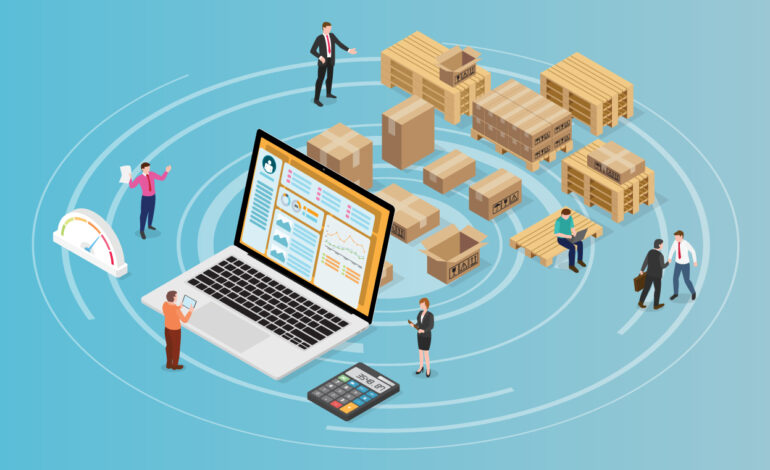
Cost vs. ROI: Is Logistics Software Worth the Investment?
When it comes to running a business that relies on logistics, you know how important it is to stay ahead. Managing transportation, inventory, and supply chains can feel like walking a tightrope—you’re constantly balancing efficiency, cost, and customer satisfaction. But with logistics software, many businesses are transforming how they operate. The big question is: Is the cost worth the return on investment (ROI)?
What Does Logistics Software Actually Do?
If you’re unfamiliar, logistics software is like having a digital command centre for your operations. It helps streamline processes such as inventory management, route optimization, order tracking, and even forecasting demand. Instead of juggling spreadsheets, emails, and outdated systems, this software consolidates everything into one easy-to-use platform.
For example, imagine having full visibility over every shipment in real-time or knowing exactly how much stock you’ll need next month. That’s the power of logistics software. But understanding what it does is just the start. Let’s look at where the real value lies: cost vs. ROI.
Breaking Down the Costs
First, let’s address the elephant in the room: cost. Implementing logistics software is an investment, no question about it. But where do these costs come from?
- Initial Setup Fees – This includes purchasing the software, integrating it with your existing systems, and customizing it to fit your business needs.
- Ongoing Licensing or Subscription Costs – Many logistics software solutions operate on a subscription basis, with monthly or annual fees.
- Training and Support – Your team will need to get up to speed, and ongoing support is often a necessary part of the package.
- Hardware Requirements – Some systems may require upgrades to your existing tech infrastructure.
These upfront costs can feel significant, but they’re only one side of the story. To evaluate whether the investment is worth it, you’ve got to consider the ROI.
How Does Logistics Software Deliver ROI?
Now, here’s where things get exciting. Logistics software doesn’t just save time—it creates measurable financial value. Let’s explore how.
1. Improved Efficiency
Think about the time and resources your team spends manually tracking shipments or coordinating deliveries. By automating these tasks, you free up time for employees to focus on higher-value activities. Faster processes often lead to quicker deliveries, better customer experiences, and ultimately, more revenue.
2. Cost Savings
Many businesses find that logistics software reduces operational costs in surprising ways. For example:
- Route optimization can cut fuel expenses.
- Inventory management tools can reduce overstock and prevent costly stockouts.
- Warehouse management features can minimize wasted space and time.
3. Real-Time Insights
When you have accurate, real-time data at your fingertips, you make better decisions. Logistics software provides insights that can help you forecast demand, adjust to market changes, and avoid costly mistakes.
4. Customer Satisfaction
Happy customers are loyal customers. By improving delivery times and offering precise tracking updates, you enhance the customer experience. This can lead to repeat business and positive word-of-mouth referrals, which are invaluable.
5. Scalability
As your business grows, so do your logistics needs. Software designed to scale can handle increased demand without requiring significant additional investments. This means you’re prepared for growth without the inefficiency that often comes with expansion.
Real Numbers: Calculating ROI
ROI isn’t just a feel-good term—it’s something you can calculate. To measure ROI for logistics software, you’ll compare the total benefits (like cost savings and increased revenue) to the total investment.
Here’s a simplified example:
- Calculate Total Savings: Add up things like reduced transportation costs, lower inventory holding costs, and decreased labour expenses.
- Add Increased Revenue: Factor in higher customer retention rates and potential new business generated by improved service.
- Subtract Total Costs: This includes setup, subscription, and training costs.
- Use the formula: ROI = (Benefits – Costs) ÷ Costs x 100
If the ROI comes out positive—and it often does for logistics software—you’re looking at an investment that pays for itself.
Common Concerns About Logistics Software
It’s natural to have some hesitations before making an investment like this. Let’s address a few:
“It’s too expensive for a small business.”
Actually, many software providers offer scalable solutions tailored to smaller operations. The cost might not be as high as you think, especially when you factor in long-term savings.
“The learning curve will slow us down.”
Most platforms are designed with usability in mind, and providers often include training to get your team up to speed quickly. Any initial adjustment period is usually short-lived compared to the ongoing benefits.
“Will it really make that big of a difference?”
Yes, especially if your business relies heavily on logistics. The time, cost, and accuracy improvements add up quickly.
Should You Make the Investment?
The decision ultimately depends on your business’s specific needs. If logistics are a major part of your operations, the ROI of software can often outweigh the costs. Even if the upfront investment feels daunting, consider the long-term benefits.
Ask yourself:
- Are inefficiencies costing you more than you realize?
- Could automation free up time and resources?
- How would better logistics impact your customer experience?
If you find yourself answering “yes” to these questions, logistics software might be exactly what your business needs to level up.
Moving Forward with Confidence
Investing in logistics software is a strategic decision—one that can transform how your business operates. From cutting costs to boosting efficiency, the potential ROI is hard to ignore. But it’s not just about numbers; it’s about positioning your business for growth and success.
So, is logistics software worth it? If you’re ready to streamline your operations, enhance customer satisfaction, and future-proof your business, the answer is clear: absolutely.





